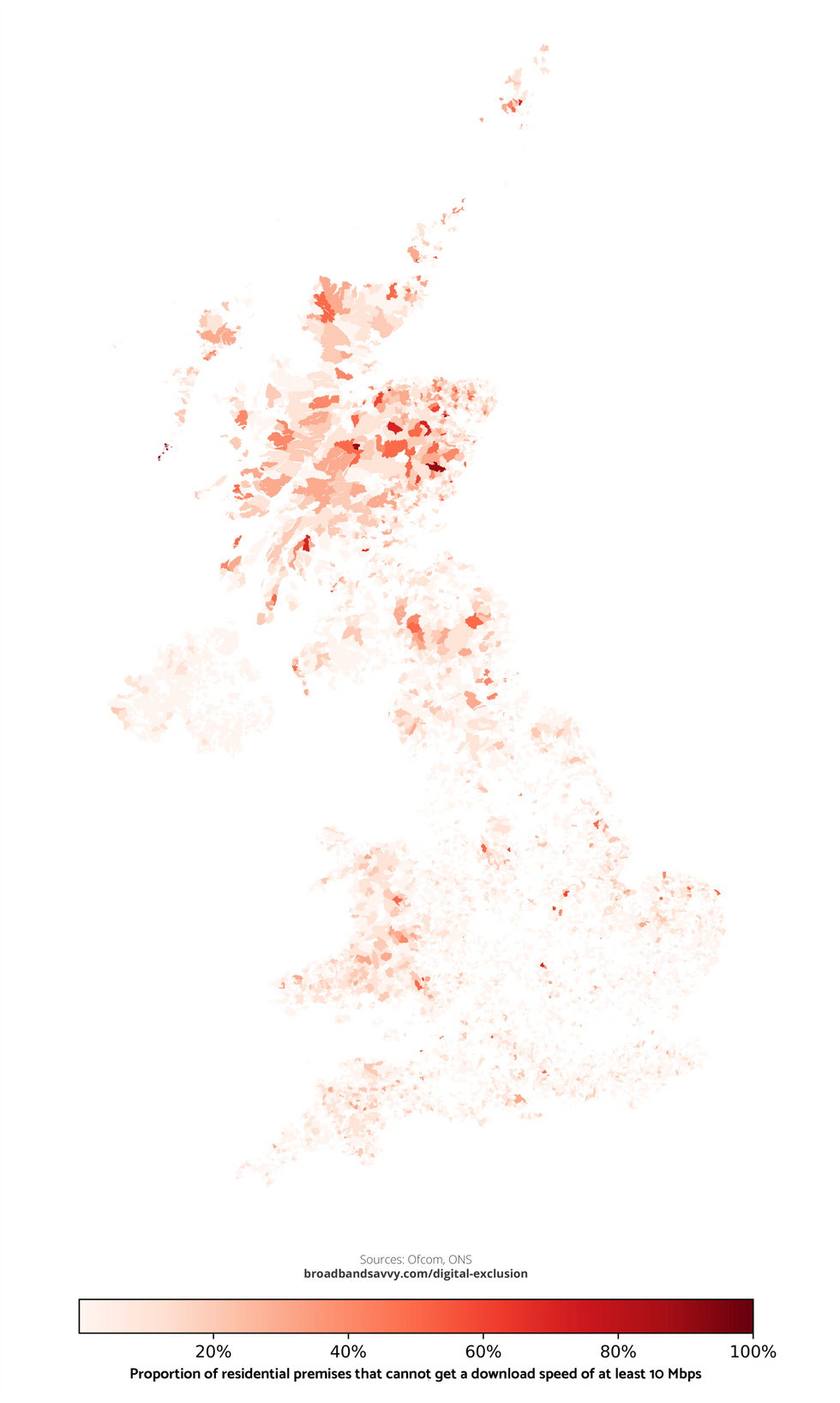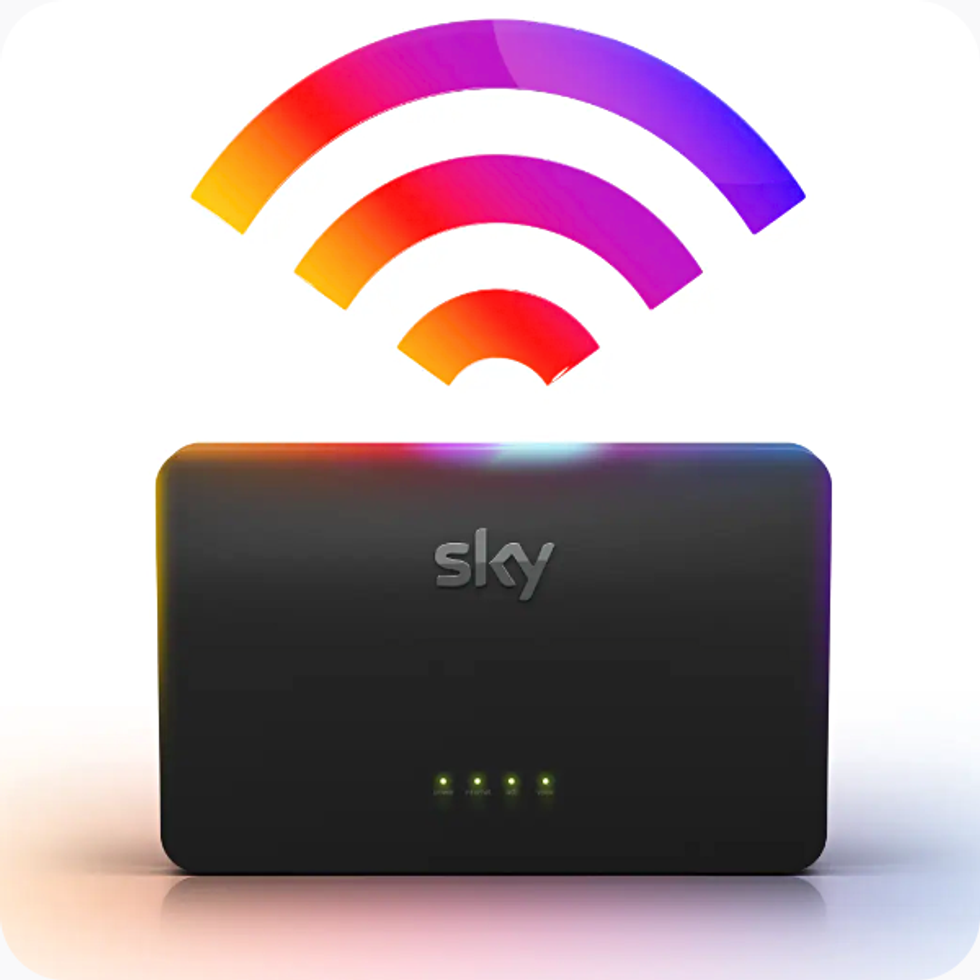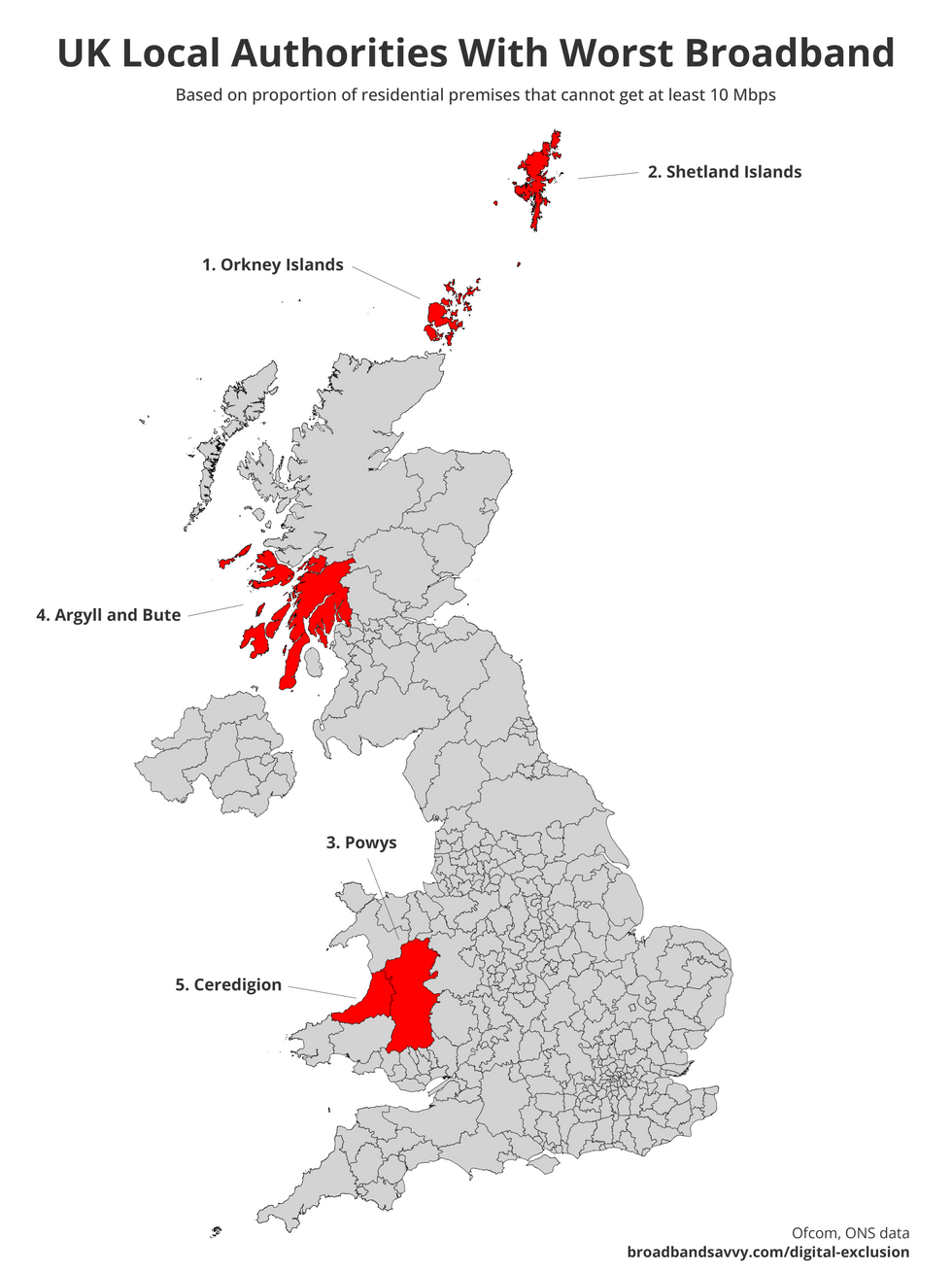Mapped: The 48,000 worst places to live in the UK for broadband speed

The team at Broadband Savvy have mapped the areas in the UK that still fall below Ofcom's definition of "decent broadband," with a minimum download speed of 10Mbps and uploads of at least 1Mbps
|SORA | GBN | BROADBANDSAVVY

All products and promotions are independently selected by our experts. To help us provide free impartial advice, we will earn an affiliate commission if you buy something. Click here to learn more
As many as 100,000 people could be living in homes that fall below Ofcom's threshold for "decent" internet
- Fresh ONS figures unmask areas in the UK with slow broadband speeds
- The team from Broadband Savvy used the data to create a heat map
- It highlights the 48,000 premises in the UK that still have sub-par internet
Don't Miss
Most Read
Struggling with painfully slow internet speeds? You're not alone.
According to new analysis of data from the Office for National Statistics, 48,000 British homes are still stranded with broadband speeds below 10Mbps. Regulator Ofcom defines a "decent broadband" connection as having a minimum of speed of 10Mbps and an upload speed of 1Mbps.
Below this threshold, you can be cut off from essential online services that most in the UK take for granted.

Using data provided by the Office for National Statistics and Ofcom, the team at Broadband Savvy were able to pinpoint the location of the 48,000 premises in the UK with terrible broadband connections
|BROADBAND SAVVY
While 48,000 premises might not sound like a lot, it's still potentially 100,000 people cut-off from this essential service – leaving them without the opportunities to work, study, and socialise that the internet provides.
Netflix recommends a minimum speed of 3Mbps or higher to watch in 720p HD, while video call applications like Zoom can function with as little as 0.6Mbps, but need much more for a smoother experience, especially when sharing a screen, broadcasting and viewing in HD quality, or juggling mutiple callers. In busy households, with multiple people downloading software updates, backing up their photos and data online, making video calls, or streaming on-demand shows from BBC iPlayer, ITVX, or Netflix... a download speed of 10Mbps will soon collapse under the pressure.
Upgrade to full-fibre speeds at 'lowest price' with Sky Broadband

Sky has revived its "lowest price" on Full Fibre 150 broadband — with download speeds of 150Mbps. That's more than fast enough for multiple people to watch Netflix, back-up their photos to the cloud, and make video calls under the same roof without any buffering. There's even a minimum download speed of 100Mbps, but this Black Friday-like saving won't be around for long!
Sky Broadband
$26
Unlock HALF PRICE Sky Cinema, Sky TV channels, discovery+, and Netflix

For a limited time, EE will slash 50% off access to Sky Cinema, exclusive Sky TV channels like Sky Atlantic, and everything included in a Netflix and discovery+ subscription. EE TV must be paired with an EE broadband plan, since there's no satellite dish — everything is streamed over your Wi-Fi connection. At checkout, you'll be able to choose between EE TV Pro box or an Apple TV 4K
EE TV
$30
$15
Elderly people among this cohort are also vulnerable to isolation as the copper phone network is switched off around the country.
The situation in the UK is particularly dire if you live in rural Scotland or Wales, where you're up to 4.6x more likely to have unusable broadband compared to England, the team from Broadband Savvy concluded. The team mapped out every residential premises stuck with slow internet below the "decent broadband" defined by Ofcom to visualise broadband dead spots across the UK.
Looking at the four nations, this is how the broadband dead spots break down...
- Wales (0.41%, 1 in 244 premises below 10 Mbps)
- Scotland (0.36%, 1 in 278 premises below 10 Mbps)
- Northern Ireland (0.21%, 1 in 476 premises below 10 Mbps)
- England (0.09%, 1 in 1,111 premises below 10 Mbps)
Efforts have been made to connect more premises to future-proof, full-fibre broadband. The most recent figures from Openreach reveal that 18.3 million homes and businesses can now access full-fibre broadband speeds.
When it comes to local authorities with the biggest share of bad broadband, here are the results uncovered by the Broadband Savvy research.
It clearly demonstrates that unusable broadband is a lot more common in rural areas, as shown by the poor performance of Wales and Scotland compared to England.
- Orkney Islands, Scotland – 385/11,920 premises below 10 Mbps (3.23%)
- Shetland Islands, Scotland – 282/11,852 premises below 10 Mbps (2.38%)
- Powys, Wales – 1,394/64,019 premises below 10 Mbps (2.18%)
- Argyll and Bute, Scotland – 952/49,877 premises below 10 Mbps (1.91%)
- Ceredigion, Wales – 629/34,906 premises below 10 Mbps (1.80%)

Local authorities with the highest concentration of homes with poor broadband connections
|BROADBAND SAVVY
Discussing the findings, Tom Paton, founder of Broadband Savvy, told GB News: "Many rural communities around the UK are still stuck with super slow broadband at the moment. While 86% of UK homes can now get ultrafast gigabit internet, we estimate around 100,000 people have been left behind, with no idea when they will get usable broadband at their address."
LATEST DEVELOPMENTS
- Microsoft must convince millions to ditch Windows 10 in four months
- Best VPN deals
- Adverts coming to YOUR WhatsApp
- Motorola launches new Android phones starting from £199
- Best Sky Glass deals
"The remote regions of Scotland and Wales are by far the worst places for broadband in the UK. If you live somewhere like the Shetland Islands, your best bet to get decent internet is to use a satellite service like Starlink."
More From GB News










